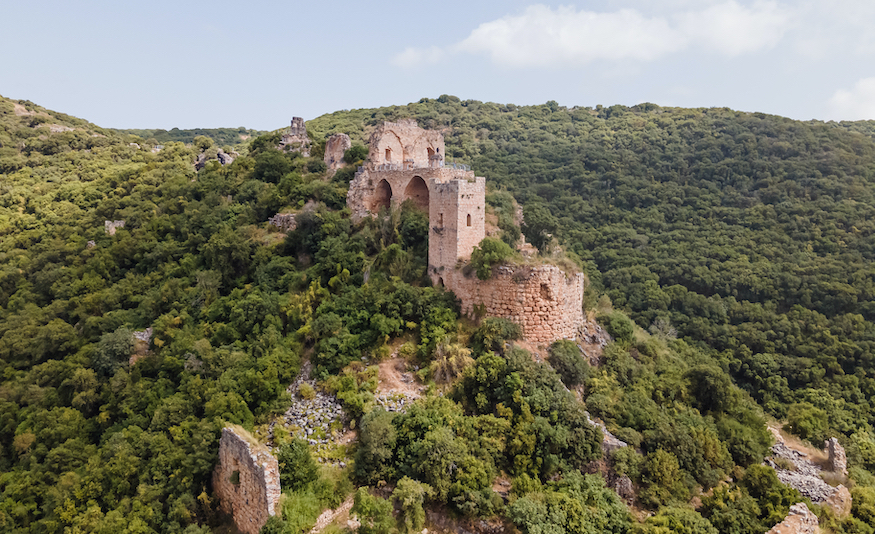Brothers in Arms
Due to the slaughter of Jews and Muslims perpetrated by the Crusaders in, and on their way to, ‘liberate the Holy Land’, the Crusaders are largely despised in Israel and throughout the Middle East. Their stay in Israel, was less than 200 years, and, according to most historians, their cultural impact – compared to others who conquered the region – was ‘minimal’.
One of the most impressive yet puzzling Crusader castles is the Monfort in Upper Galilee. It is located in a nature reserve and a national park and is a popular place for Israeli hikers. The castle sits high on a ridge densely covered with trees. Below is the Brook of Kziv, a 20-kilometre seasonal river where water flows only during parts of the year. Although popular for school trips and a refreshing Sabbath activity, the place is puzzling. The Crusaders had sworn an oath to establish hospitals and protect pilgrims en route to Jerusalem. But this 13th-century castle neither overlooked hospitals, settlements or any road. And it defended absolutely nothing.
“The internal weakening of empires made it easy for other powers to rise in their place”
History shows that due to moral decay, every great empire has imploded from within. The internal weakening of empires made it easy for other powers to rise in their place. The Crusaders are no different. Before their kingdom fell to Egyptian converts to Islam, it first fell apart due to the different Crusader Orders bickering among themselves.
This squabbling could be the only clue as to the location of the fortress. One theory proposes that it was initially built to move the Crusader archives and treasury from the coast to this more isolated location but as a result of the later tension between the Crusaders, the Teutonic Order barricaded themselves in after learning that their ‘Brothers in Arms’, the Templars and the Hospitallers, wanted it for themselves. The Teutonics incidentally, were German knights who joined the Crusader army under Emperor Friedrich Barbarossa – the name Hitler chose for his invasion of the Soviet Union in World War II.
Digging for eight consecutive years at the Monfort, Israeli archaeologists and students from London recently unearthed a magnificent ceremonial hall. It had Gothic architecture, a plastered floor, stained glass and walls over two meters thick. The hall would have been used for guests and dining. Possibly it could have also served as a chapter house where the Crusaders assembled and discussed the ins and outs of life in the castle.
In addition, the team discovered fine glassware, jewellery and Nine Man Morris, a strategy board game that people played way back in the Roman Empire, as well as luxurious apartments with glided wood and decorative walls. Other finds show that the Crusaders enjoyed types of food that Israelis would squirm at. Bones from domestic European pigs were found and the remains of turtles.
The ongoing conflict with other Crusaders made the Teutonics show-case Montfort, an isolated island in expanding Muslim territory. Its name, which means ‘strong fort’ was ironically easy prey. The Egyptian Mamluk siege took a mere 15 days. Despite his brutal reputation, Baibars the leader spared the Germans. One theory is, he valued the humiliation of escorting them back to the coast and flaunting his victory over finishing them off with his sword which would be out of sight and out of mind. Baibars returned to destroy the castle on the 4th of July – no relation to American Independence Day – and it was never inhabited again. As an aside, the siege debris discovered at Montfort is the first solid evidence of the Mamluk attack that had previously only been known from medieval sources.
The archaeological finds are one more step in helping archaeologists understand the Crusaders, and what they actually did all day. But until more is unearthed, what we know for now is that those who lived there (supposedly in the spirit of a humble monastic lifestyle), appeared to do so in boredom, self-gratuity and blatant luxury which ultimately caught them off guard.





